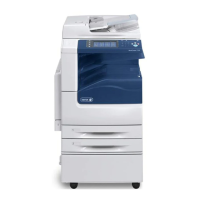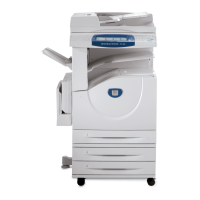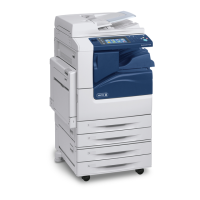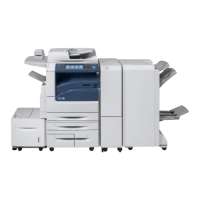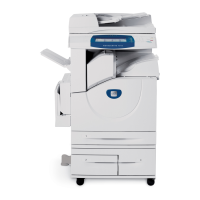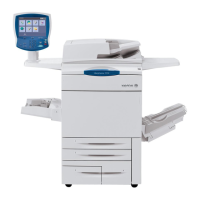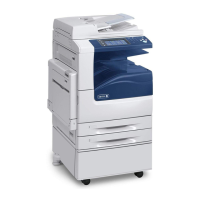CARD
READER
STATES
The
initial
state
of
the
card
reader
depends on its power
status.
The
complete
absence
of
power to
the
card
reader
subsystem
(that
is,
the
absence
of
its prime
ac
power and
system
dc
power)
effectively
removes the card
reader
from
the
control I ing system. All attempts to
access
the
card
reader
result in a response
of
"no
input/output
address
rec-
ognition"
to
the
I/O
inshuctions.
Furthermore,
unpredictable
status conditions
are
suppl ied if status response
is
requested
by
the
I/O
instruction.
In the
absence
of
ac
power, the
presence of system
dc
power will
enable
address
recognition,
but
the
card
reader
assumes a
"not
operational"
state.
L
ike-
wise,
failure
of
power supplies internal to
the
card
reader
causes
the
card
reader
to
assume a
"not
operational"
state.
OPERATIONAL
STATES
The
presence
of
ac
and dc power, with no read
station
faul t
or
transport mechanism
fault,
enables
the
card
reader
to
as-
sume
either
of
two
device
conditions
("ready"
or "busy")
and
either
of two modes
("manual"
or
"automatic").
A read
station
fault
exists
if
one or more
of
the
photoelectric
channels
for sensing punches in
the
card
rows
have
failed
to
pass
the
read
station
test in
the
previous card read
operation.
A transport mechan
ism
faul t exists
if
a card jam exists
in
any
portion of the card transport
area.
The
exact
condition
and mode status of
the
card
reader
at
any
given
time
is
returned to
the
controlling system in
re-
sponse to such
I/O
instructions as
SIO,
HIO, and no.
Other
I/O
instructions, such as AIO and TDV, provide more
specifi
c
indications
of the card
reader's
status (see "Status
Response" in
Chapter
3).
Abriefexplanationofthepossible
conditions
and
modes
of
the
card
reader
follows.
CONDITIONS
Ready. In
the"
ready"
condition
the card
reader
is
capabl e
of
accepting
an SIO
instruction,
providing no
device
inter-
rupt
is
pending.
In order to be in
the
"ready"
condition,
the card
reader
must
be
operational
(that
is,
all
conditions
defined
under
"Operational
States"
must
be
satisfied)
and
the
execution
of
an
order
to
read a card
is
not in progress
or
pending.
Busy. In this
condition
the
card
reader
has
accepted
an
SIO
instruction.
The
unit
will not
accept
a new
S10
until
the
current
order list
is
completed and
no
device
interrupt
is
pending.
MODES
Manual.
The card
reader
assumes the
"manual"
mode when
any
condition
arises requiring
operator
intervention
before
the
reader
can
function normally
(e.g.,
stacker
full,
hop-
per empty,
etc.).
The
"manual"
mode is forced by
the
operator
pressing
the
STOP switch or
RESET
switch on
the
card
reader
control
panel.
The
reader
can
accept
an
SIO
instruction
in
this mode,
but
will not
act
on it
in
any
way until
it
enters the
"automatic"
mode.
Automatic.
When all necessary conditions for successful
card
reader
operation
are
present,
the
reader
is
placed
in
the
"automatic"
mode by
the
operator
pressing
the
START
switch on
the
card
reader control panel (thus
illuminating
the
switch).
TRANSITION
BETWEEN
STATES
The
allowable
card
reader
state
transitions
and
the
condi-
tions causing
the
reader
to
change
from one
state
to
another
are
summarized in
Table
2.
DATA
TRANSFER
A card read
operation
is
initiated
by
the
controll ing system
with a
START
INPUT/OUTPUT (SIO) instruction
if
all
the
following conditions
are
satisfied:
1.
Input/output
address
recognition
exists.
2. The card
reader
is
in
the"
ready"
condition.
3.
No
interrupt
is
pending.
If
the
card
reader
is
in the
"automatic"
mode, it then requests
an
order from
the
controll i
ng
system.
After
accepting
a read
order,
the
card
reader
advances
a card
from
the
input
hop-
per to the read
station,
and
commences
to
read the
card,
column by column,
beginning
with column
1.
If
reading
is
performed in
the
EBCDIC
mode, one
8-bitbyte
is
transmitted
to
the
control I ing system for
each
col
umn
read,
and
a
code
validity
check
is
performed on
each
byte.
In
the
binary
read mode
three
8-bit
bytes
are
transmitted to the control I ing
system for
each
odd-even-numbered
pai r
of
col
umns
(no
val
idity
check
is
performed in this mode). Reading continues
until
one
of
the
following conditions occurs:
1. The end
of
the
card
is
detected.
2.
The card
reader
receives
a
"count
done" or
"halt"
sig-
nal
from
the
controlling
system.
3.
A
"fault"
condition
is
encountered.
If
the
card read
operation
was not
terminated
by a card jam,
the
card
is
then routed to the
stacker
station,
where
it
is
sensed
and
directed
to
the
normal
stacker
unless:
1.
The Read Automatic
order
specified
error
stacking
and
the
validity
check
(for
EBCDIC
mode only)
indicated
that
the
card
contained
an
invalid
EBCDIC
punch
con-
figuration,
in
which
case
the
card
is
directed
to
alter-
nate
stacker
2 (Model 7120) or to the
alternate
stacker
(Model 7140).
2.
The Read
order
specified
error
stacking
and
a
data
over-
run has
occurred,
in
which
case
the card
is
directed
to
al
ternate
stacker
2 (Model 7120)
or
the
alternate
stacker
(Model 7140)
and
the
controll ing system
is
notified
of
the error with the Data
Overrun
and Unusual End
indicators.
Card Reader
States/Data
Transfer 3

